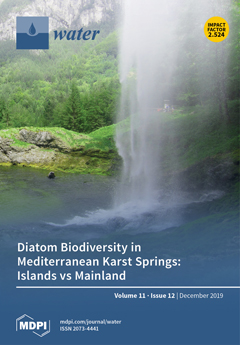Due to changing precipitation patterns induced by climate change, urban planners are confronted with new challenges to effectively mitigate rainfall runoff. An important knowledge gap that needs to be addressed before tackling these challenges is how and to which extent street/drainage grid density and spatial land use configuration influence the amount of runoff. Therefore, a virtual experiment was conducted to assess the influence of grid density and spatial land use configuration on the functional runoff connectivity (F
c), which is a measure of the easiness by which water flows through the landscape. Through the use of a design of experiments approach in combination with the SCS—Curve Number runoff model, a wide variety of neutral landscape models with a fixed percentage of pervious- and impervious cover were generated that maximized the variance of F
c. Correlations between landscape metrics and neutral landscape models were calculated. Our results indicated that, out of the 17 landscape metrics tested, the average impervious cluster area, the number of impervious clusters, the standard deviation of the cluster size, two proximity indexes and the effective impervious area were strongly correlated with F
c throughout all grid scenarios. The relationship between F
c on the one hand and the average impervious cluster area and the effective impervious area on the other hand, was modelled. The average impervious cluster area models showed a relationship with F
c that closely approximated a logarithmic function (R
2: 0.49–0.73), while the effective impervious area models were found to have a linear relationship with F
c (R
2: 0.63–0.99). A dense grid was shown to cause a strong increase in F
c, demonstrating the effectiveness of an urban grid in channeling and removing runoff. Our results further indicate that fine-grained landscapes with a lot of small impervious clusters are preferred over course-grained landscapes when the goal is to reduce F
c. In highly urbanized landscapes, where the percentage of impervious area is high, small changes in landscape pattern could significantly reduce F
c. By using a downward hydrological modeling approach this research aims to bring more clarity to the underlying variables influencing F
c, rather than trying to generate realistic prediction values.
Full article





